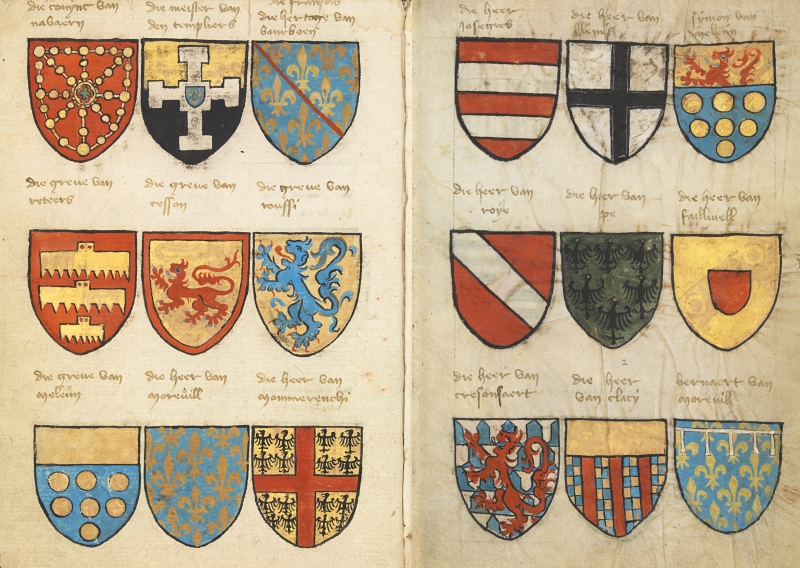
Heraldry was initially a byproduct of feudalism and chivalry, as its primary function was to enable knights to be recognized on the field.
The coat of arms became of particular importance when the closed helmet came into use, preventing the face of the knight from being seen. In fact, Duke William of Normandy nearly missed his goal of conquering the Saxons at the Battle of Hastings when his men couldn't identify him in the midst of the battle, and word went out that the Duke was dead. Pulling off his helmet to dispel the rumor, Duke William shouted at his soldiers to return to battle. Seeing that their leader still lived, the knights renewed the fight and won England from King Harold Godwinson.
Ganfanons (lance flags decorated with personal emblems and held by standard bearers) were the chief means of heraldry before the twelfth century, especially during the crusades. These flags allowed knights to identify the leader of their military operation, and gave them a rallying point. By the late twelfth century, the ganfanon was replaced by the banner.
Early heraldic designs were very simple, usually made up of straight lines, one or two colors, and painted on banners and shields. In the thirteenth century, the emblems were stitched onto surcoats, giving birth to the term 'coat of arms'. Animals were introduced as 'charges', soon after. The most frequently displayed were lions, eagles and griffins, either singly or as a pair.
In the beginning, two metals (gold and silver), five colors (red, black blue, green and purple) and two furs (vair and ermine) were used in designs. Later, gems, precious stones and new colors were used as decoration. The colors were referred to in French and were given symbolic characteristics. Gold (or), not surprisingly, was the noblest of all colors. Silver (argent) represented purity and justice. Red (gules) represented aggressiveness; green (vert) represented happiness, pleasure and youth. Blue (azure) symbolized justice and purity; purple (purpure) symbolized royal majesty, sovereignty and justice; black (sable) represented misfortune and difficulty.

Tinctures constitute the limited palette of colors and patterns used in heraldry. The use of these tinctures dates back to the formative period of European heraldry, in the twelfth and thirteenth centuries, but the range of tinctures and the manner of depicting and describing them has evolved over time ... Read more at Wikipedia.